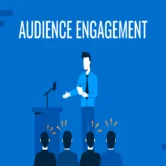
Introduction to performance-based online ads
Introduction
Performance-based online ads have transformed the digital advertising landscape by prioritizing measurable results over traditional impressions. Unlike brand awareness campaigns that focus on visibility, performance-based ads are structured around specific, trackable actions—such as clicks, leads, app installs, or purchases. Advertisers only pay when a predefined outcome is achieved, making this model cost-efficient and ROI-driven. This approach is especially attractive for businesses seeking accountability, scalability, and data-informed optimization. As digital platforms grow more intelligent, performance marketing empowers advertisers to target precisely, personalize messaging, and continually refine campaigns based on real-time feedback.
Understanding performance-based ad models
Performance-based advertising operates on models where payment is triggered by user actions. The most common types include CPC (Cost Per Click), CPL (Cost Per Lead), CPA (Cost Per Acquisition), and CPM (Cost Per Mille, or thousand impressions) when used in hybrid models. Each model serves different campaign goals—clicks for traffic, leads for funnel growth, and acquisitions for direct sales. By selecting the right model, advertisers align their spending with the outcomes that matter most to their business.
Targeting the right audience segments
One of the strengths of performance-based advertising is the ability to precisely define and reach target audiences. Platforms like Google Ads, Meta Ads, and LinkedIn Ads allow detailed targeting by demographics, interests, behaviors, and device usage. Marketers can create highly specific segments and tailor messages that match user intent. This precise targeting ensures that every ad dollar is spent reaching high-potential prospects, increasing conversion likelihood and reducing waste.
Crafting conversion-focused ad creatives
Unlike awareness ads, performance-based campaigns demand creatives that drive immediate action. Headlines must be attention-grabbing, visuals clear, and calls-to-action compelling. The message should focus on user benefits and offer clear next steps—such as “Buy Now,” “Sign Up Today,” or “Download Free Guide.” A/B testing different versions of creatives allows marketers to identify which design or message yields the best results and scale accordingly.
Landing page optimization for conversion
The journey does not end with the ad. An effective landing page is crucial for converting visitors into customers or leads. Pages should be fast-loading, mobile-responsive, and aligned with the ad’s message. A clear headline, focused content, minimal distractions, and a strong call-to-action are key components. Performance marketers use tools like heatmaps, form analytics, and user behavior tracking to continuously improve landing page performance.
Utilizing tracking and analytics tools
Performance-based advertising is data-centric. Tools like Google Analytics, Facebook Pixel, and conversion tracking codes allow marketers to monitor user actions, attribute performance, and refine strategies. KPIs such as click-through rate (CTR), conversion rate, cost per conversion, and return on ad spend (ROAS) provide actionable insights. Real-time analytics make it possible to pause underperforming ads, scale winners, and optimize campaigns with precision.
Retargeting and remarketing strategies
Retargeting plays a vital role in performance campaigns by re-engaging users who have previously interacted with your site or content but didn’t convert. Through platforms like Google Display Network and social media ads, brands can serve tailored ads to these warm audiences. Personalized offers, reminders, and urgency-driven messaging can recapture attention and boost conversions. Retargeting increases ROI by maximizing the value of initial website visits.
Leveraging automation and AI
Modern performance platforms incorporate AI-driven features that automate bidding, targeting, and creative delivery. Smart Bidding in Google Ads, dynamic creative optimization, and campaign budget automation allow advertisers to focus on strategy while algorithms manage efficiency. AI uses historical data and predictive analytics to adjust bids in real time, ensuring better performance and budget control. This reduces manual work and enhances scalability.
Choosing the right platforms and networks
Not all platforms suit every goal. Search engines (Google, Bing) are best for intent-based actions, while social platforms (Facebook, Instagram, TikTok) are ideal for visual products and audience engagement. Affiliate networks, influencer platforms, and native ad networks also support performance marketing with specialized formats. The choice of platform should align with the product type, audience behavior, and desired action.
Ensuring compliance and ad quality
Performance-based ads must comply with advertising policies of each platform. Violations can lead to disapprovals, penalties, or account suspensions. High-quality ads that meet guidelines, provide value, and maintain transparency (e.g., accurate landing pages, honest claims) not only perform better but are rewarded with lower CPCs and higher ad rankings. Ensuring compliance protects brand reputation and ensures campaign longevity.
Conclusion
Performance-based online ads offer a strategic and measurable approach to digital marketing, enabling businesses to pay only for results. By combining precise targeting, compelling creatives, optimized landing pages, and data analytics, advertisers can drive high-impact campaigns with efficiency and clarity. The structure of these ads ensures that every element—from impression to conversion—is guided by intent and performance metrics. As platforms and technologies continue to evolve, performance marketing will remain a core tactic for brands aiming to achieve growth through measurable, accountable, and ROI-focused advertising.
Hashtags
#performanceads #digitaladvertising #ppcmarketing #cpacampaigns #performancebasedmarketing #adcreatives #conversionoptimization #googleads #facebookads #digitalstrategy #marketingroi #roas #targetedads #smartbidding #performancecampaigns #retargetingads #advertisinganalytics #onlinemarketing #aiperformance #conversiontracking #marketingautomation #adoptimization #searchmarketing #landingpageconversion #clickthroughrate





